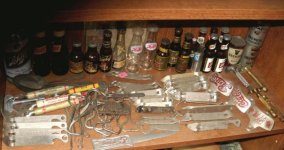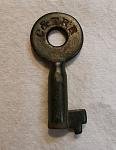A little more information on that railroad key. It is probably what's called a "Switch key" and would open the box that protects the track switching lever. I have my great grandfather's switch keys. A friend of my grandmother's, and co-worker of my great grandfather's was Chester Russell. He worked on the St. Louis & San Francisco Railroad. Their motto was "Ship It On The Frisco!". he had a wooden leg. When, as a child, I asked him how he lost his leg, he replied that being a fashionable and foolish young man, he had disobeyed railroad regulations, and wore his pants cuffed.
Railroads back then forbade switchmen and yard men to wear their pants rolled up at the ankle, because of... well, what happened to Chester. "I was humping cars," he said (more on How To Hump A Train! later) "and my pants leg got caught between the sections of track as they came together." Seeing the boxcar coming off the hump, he knew he was going to be hit, so he threw himself back as far as he could "With my leg across the track, and I watched that car come rolling over it, cutting off my leg!" I can only imagine the horror and pain he endured. Railroading is not a safe occupation.
Now... How To Hump A Train!
Probably, some have found, while detecting, old railroad signs reading "DO NOT HUMP!" or "NO HUMPING!" In today's parlance they're funny. 100 years ago, they had a different meaning.
Every railroad yard has a roundhouse. Tracks radiate from that roundhouse all the way in a sort of star pattern, with the roundhouse and the "hump" at the center. The "hump" is a circular platform that revolves. It has a single length iof track which connects, as you swivel it, to the other tracks. To assemble a train, the cars, whether boxcars, freight cars, passenger cars, tanker cars etc, you rotate the hump (so called because it is slightly higher than the rest of the tracks, which meet it at an angle) to push the car from one track (via a switch engine or donkey engine) up onto the hump, then rotate that hump around to the train you are assembling. Another shove gets that car rolling down toward the train being put together, and gravity does the rest. The two couplers shaped roughly like a 'p' and a 'b' strike each other and interlock... CRASH! at which point the switchman would drop a large pin into the couplings, affixing the car to the train. Lather, rinse repeat. Using the hump you could assemble anywhere from one to six trains that would then head out to their destinations.
This was dangerous work as the couplings were about two to three feet across at their joining ends, and I have been told stories of men caught between the couplings as the cars came together. They were alive and conscious... but they knew that they had essentially been severed at the waist! They would only remain alive so long as the cars were coupled, pinioning them. The moment that the cars were uncoupled... they would die from blood loss and being cut in half.
So yes, switch-keys have a long and sometimes terrifying story. Now switching is done by machine, but pause for a moment to have a thought of the brave men who used them to move tracks and keep the trains rolling.
Sage(Two longs, a short and a long! Whistle signal for a grade crossing!)Grouse


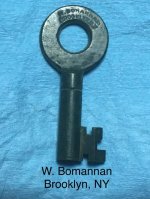
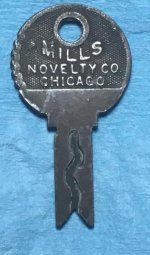
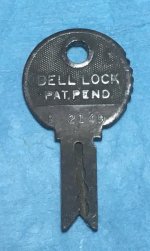
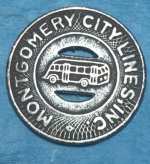
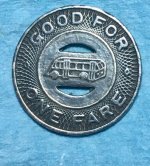
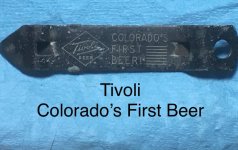

 at least i have a good face mask...
at least i have a good face mask... 
